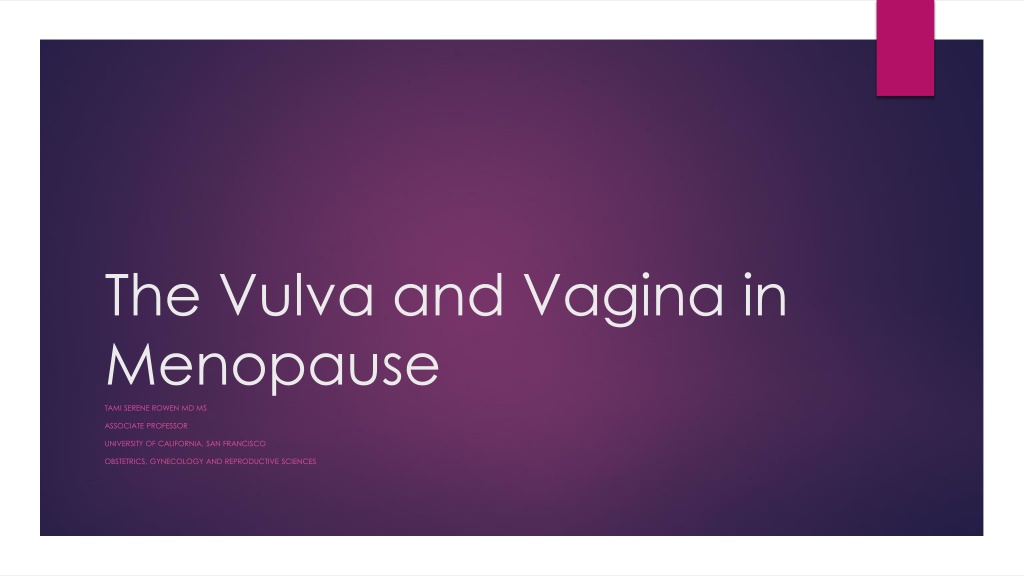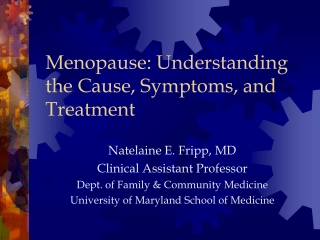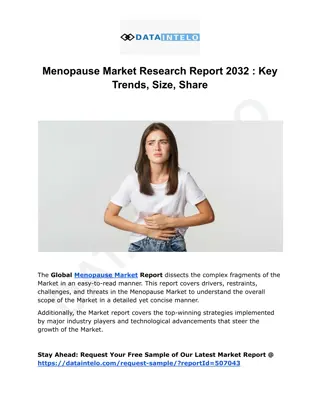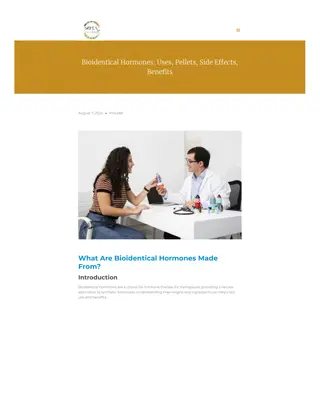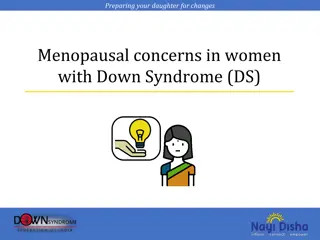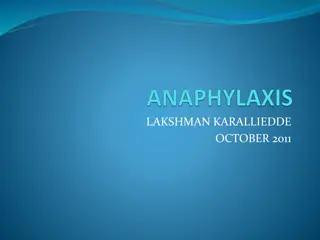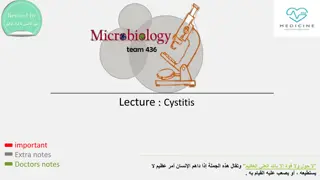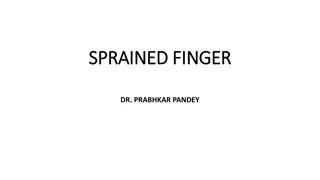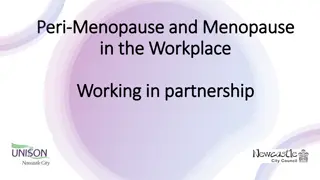Understanding Vaginal Symptoms in Menopause and Barriers to Treatment
The article discusses the various symptoms associated with the Genitourinary Syndrome of Menopause (GSM) such as decreased vaginal moisture, urinary frequency, and sexual difficulties. It highlights the prevalence of these symptoms in women and the barriers to seeking treatment, including discomfort discussing symptoms, limited knowledge of treatment options, and cost hurdles. The importance of addressing these symptoms and enhancing patient-provider communication is emphasized to improve the quality of life for menopausal women.
- Menopause Symptoms
- Genitourinary Syndrome
- Womens Health
- Treatment Barriers
- Patient-Provider Communication
Download Presentation

Please find below an Image/Link to download the presentation.
The content on the website is provided AS IS for your information and personal use only. It may not be sold, licensed, or shared on other websites without obtaining consent from the author. Download presentation by click this link. If you encounter any issues during the download, it is possible that the publisher has removed the file from their server.
E N D
Presentation Transcript
The Vulva and Vagina in Menopause TAMI SERENE ROWEN MD MS ASSOCIATE PROFESSOR UNIVERSITY OF CALIFORNIA, SAN FRANCISCO OBSTETRICS, GYNECOLOGY AND REPRODUCTIVE SCIENCES
How Many Symptoms are we Talking About Erythema Tissue fragility/fissures/petechiae Decreased vaginal moisture/elasticity Labial shrinkage/labial fusion Loss of vaginal rugae (folds) Clitoral hood retraction Vaginal stenosis and shortening Signs and symptoms of GSM Urinary Frequency Urgency Post-void pain Dysuria (pain with urination) Nocturia (urinating at night) Hematuria (blood in urine) Recurrent urinary tract infections Prominence of urethral meatus Sexual Decreased lubrication with sexual activity Dyspareunia Post-coital bleeding Decreased arousal/orgasm/desire Hypertonic pelvic floor Pelvic pain Genital Dryness Imitation/Burning/Itching of vulva and vagina Bothersome discharge
Vaginal Symptoms and Menopause Genitourinary Syndrome of Menopause (GSM) previously known as vulvovaginal atrophy are present in upwards of 905 of women (ranges 39-90% in various studies) Women in the United States have a higher rate of discomfort discussing with a provider The symptoms associated with GSM can occur during any reproductive stage. Relative low estrogen states can occur in pre-menopausal women, altering circulating hormonal levels and microbiota. Fewer than 10% of women with GSM symptoms use prescribed therapy; this disparity between prevalence and treatment can be attributed to a lack of patient and provider education and a failure to recognize symptoms.
Barriers to Treatment Patient comfort discussing symptoms Provider comfort asking about symptoms Limited knowledge about treatment options Concerns regarding safety of treatments Classification of treatments as lifestyle medications Cost barriers to treatment
More on Sex: Its not just GSM! Prevalence of sexual problems associated with sexually related personal distress by 10-year age bands. Filled circle, desire; open triangle, arousal; filled square, orgasm; open diamond, any. From Shifren JL, Monz BU, Russo PA, Segreti A, Johannes CB. Sexual problems and distress in United States women: prevalence and correlates. Obstet Gynecol. 2008;112(5):970-97
Limitations of Current Treatments For sexual desire FDA approved meds are ONLY for premenopausal women Approval for postmenopausal women involves treating psychotropic same as hormone therapies Many women seek off label medications, especially Testosterone, which is not approved for women but has significant evidence for use The lack of an approved product leads many to seek care with people who do not follow any known guidelines on prescriptions and expose patients to harm
Recommendations Consider importance of approval of variety of FDA approved medications for GSM Local vaginal hormones, including estradiol and prasterone Medications that can be taken orally Ideal for patients with severe trauma and or pain Coverage for perimenopausal women to access FDA approved medications for low desire Regulation and oversight for off label use of hormones, focusing on role of professional guidelines for off label use
